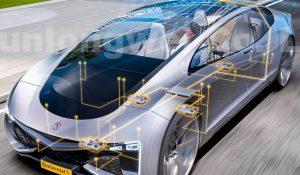
“The growing variety of vehicle functions requires more and more computing power and increasingly complex software applications,” said the company’s CTO Gilles Mabire. “Continental’s new architecture is paving the way for the software-defined vehicle.”
Dubbed ZCU, it will be server-based, with central high-performance computers and a small number of zone control units interfacing with sensors and actuators, rather than many local control units.
“Thanks to a clear division of tasks in the organised vehicle electronics, the separation of hardware and software and, lastly, the necessary standardisation of interfaces, the growing complexity and an almost exploding scope of software inside the vehicle can be managed in a much better way,” said Continental head of architecture Jean-Francois Tarabbia. “Moreover, we enable the integration of third-party hardware and software.”
Bundling the software components centrally will improve cyber-security and updatability, he added.
It has already developed one central computer for the architecture, which, said Continental, has been delivered to Volkswagen for its ID.3 and ID.4 electric vehicles.
“By individually configuring the number of HPCs [servers] and zone control units, how they interact and how they are arranged in the vehicle, automobile manufacturers can individually tailor their architecture to their needs,” according to Infineon, which is co-developing a scalable zone controller design with Continental, based on Aurix TC4 microcontrollers.
The aim is for the zone controllers to provide all control, data and communication management tasks at the front right of the vehicle, the front left and the rear. “Data streams from different vehicle domains merge in the zone control units,” said Infineon. “The data will then be processed and passed on to the HPCs as the top control level via secure Ethernet. Conversely, zone control units act as a coordination point for executing commands from the server level.”
Aurix TC4x ICs are designed to allow functional safety to be implemented up to ASIL D, and they offer routing accelerators to ease Ethernet and CAN communication.
Secured over-the-air update hardware is included, and on-board cyber-security was developed to ISO/SAE 21434, according to Infineon, and can protect against potential quantum computer attacks.
Non-volatile RRAM in the MCUs, introduced with the TC4 generation, revives the possibility of instant-on features. “As soon as the vehicle is started, functions such as parking assistance, air conditioning, heating and suspension are ready within fractions of a second,” said Infineon.